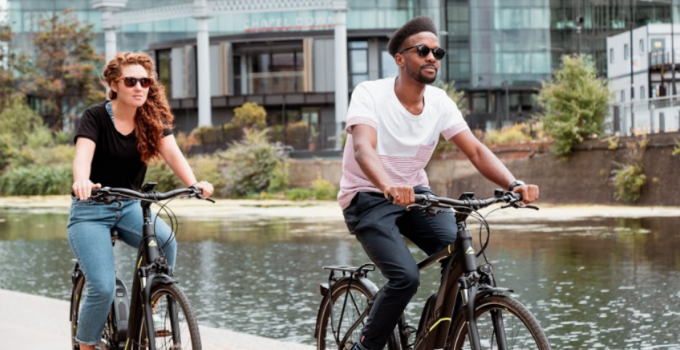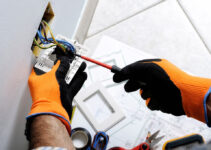Although e-bikes and regular bikes are much similar, both can offer very different experiences of riding. Riding an electric bike for the first time can make even a pro rider anxious. Whether you are a seasoned rider or a newbie, these tips will help you get started with an E-bike.
While rigid, an e-bike is fun and important to maintain safety. There are riding measures that should be maintained to have an easy ride. Following the tips below will ensure you don’t run into any accidents.
7 Things to Keep in mind While Riding an E-Bike
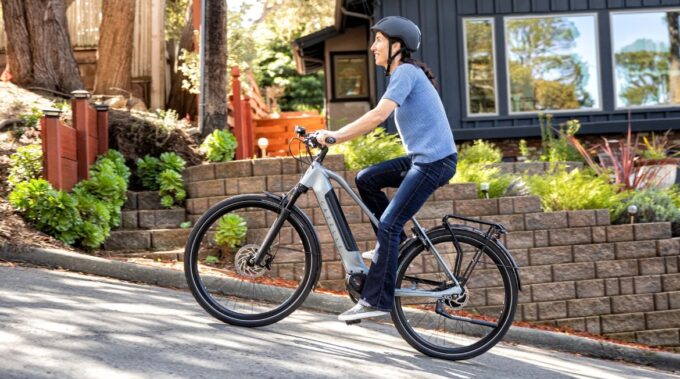
Source: electrek.com
1. Keep an Eye Out on the Road
Riding an electric bike is not much different from riding a regular bike. You just need to keep an eye out on the road.
Always pedal, remaining in a seated position. Electric bikes have a low center of gravity. Standing up to pedal makes them unbalanced.
Electric bikes assist you with pedaling. The motor can pick up a significant amount of speed. So make sure you are alert to your surroundings. You can attach rear view mirrors to be better aware of your blind spots.
2. Keep Up with Good Maintenance
Electric bikes should be well maintained. You should check the inflation of tires, motor, battery, and assembly of the bike.
Make sure there’s enough power in the battery to last your journey. Check the brakes to see if they are working correctly.
If the tires are not inflated properly, you will run at a low speed and can run into an accident. Regularly lubricate the bike chains including the cables. Good maintenance will make biking easier. Read more online to know proper e-bike maintenance techniques.
3. Get Used to the Brakes
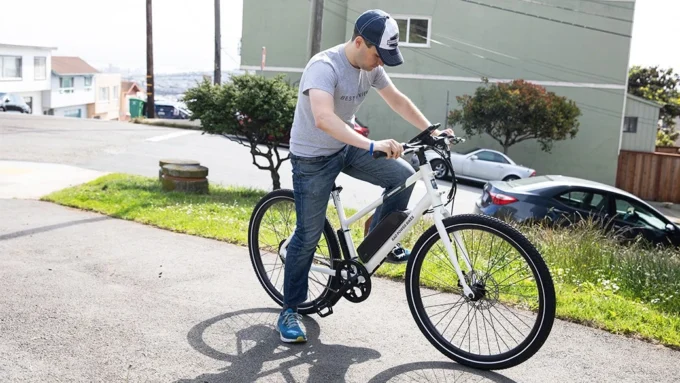
Source: kdvr.com
Brakes in electric bikes need to be worked differently than regular bikes. While braking on an electric bike, you should first stop pedaling, so the motor shuts off. Then stand up and push the brakes.
The center of gravity of electric bikes is quite low. So you need to stand up to brake to balance the weight on the front wheel.
The brakes should adjust to your motor. Take the bike on a test run and see how the brakes feel.
The rear brakes should be pushed first when riding. However, using both brakes is better than relying on just one. Front brakes are useful to stop increasing distance.
4. Know Your Battery
You need a good battery that will support your motor and not give out early. Decide first on the type of the battery. A removable battery is more flexible when it comes to charging. If your battery is removable, ensure it doesn’t slide out after attaching.
A good battery will have more capacity than your motor. For example, if the motor is 250 Watts, your battery should have a capacity of 500 Watts. This ratio will ensure a balance between them.
You can see the remaining power, pedal assist, and headlight status on the screen of the e-bike. You can carry a spare battery with you on longer journeys.
5. Put on Your Safety Gear
You must have safety gear on while riding an E-bike. You should have well-fitted clothes that won’t get caught up in the bike. Comfortable shoes are recommended because you’d be pedaling.
A helmet is necessary while riding an e-bike. And if you are a first-time rider, knee guards should also be put on.
You can carry water bottles and a light snack with you because although there’s pedal assist, you can still get tired riding the bike.
6. Test the Throttle
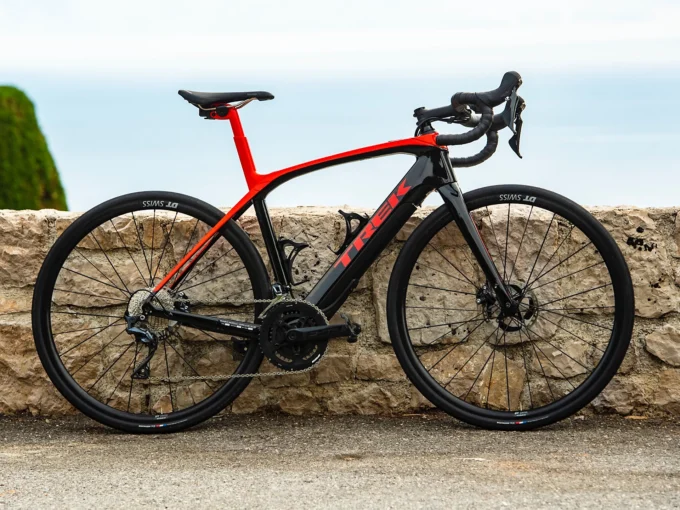
Source: trekbikes.com
Your e-bike can run on pedal-assist or throttle mode. The throttle gives you a boost of power through the motor without having to pedal.
The throttle on E-Bikes is pressure sensitive. That means the more pressure you apply on the throttle button, the more power you get. The throttle can save energy because you won’t have to engage the pedal with it. However, some bikes can utilize throttle from pedaling.
Throttles give you extra power that helps you speed through and requires careful handling.
7. Check the Balance of the Bike
Check if the bike fits you or is suitable for your height.
The seat should be comfortable. So adjust the height according to your preference. You may want to keep your feet on the ground while sitting.
The handlebars should comfortably be within your reach. Otherwise, you will get shoulder and elbow pain.
You should also check the brakes and see how that feels. The pressure exerted on the lever will affect how you brake. So test this on a flat surface before purchase.
How to Ride on the Road
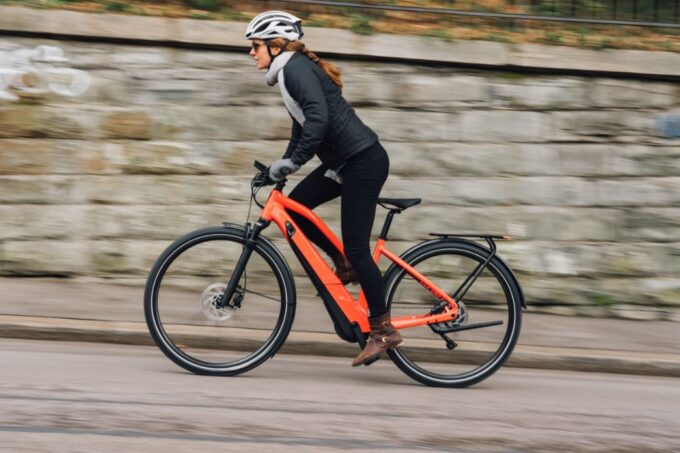
Source: bicycling.com
- Using the Brakes: Try to use breaks when you’re going in a straight line. Push them early and try to use both the front and the rear brakes. Braking in a curve is hard on an e-bike, so slow down and stand up to redistribute your weight on the front wheel while stopping.
- Turns: You should slow down in the turns while riding the E-bike and follow the curve slowly. Stand up a little and balance the turning.
- Maintain Traction: E-bikes are faster and have a lower center of gravity. It is better if you maintain traction at all times.
- Use the Lower gears: Using the lower gears would preserve battery power. This will require faster pedaling, but you’ll get better mileage.
- Get Used to the Weight: E-bikes are heavier than regular bikes. You should try riding them without pedal assist or throttle to get used to the weight.
- Lock Up Your Bike: You should invest in a good lock for your bike, so it doesn’t get stolen.
- Battery Maintenance: You should remove the key from the battery after locking it in. Otherwise, the battery will slide off while riding.
Conclusion
E-bikes are easy to ride and perfect for city commutes and trails. Don’t let the risks intimidate you. Hopefully, these tips will help you have a safer ride.

